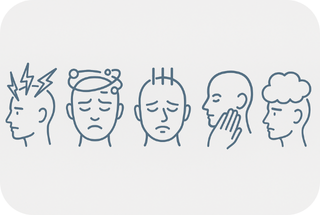You’re not imagining it. And you’re not alone.
If you’ve been in a car accident and weeks or even months have passed — but your symptoms haven’t — you may have started to doubt yourself. Maybe your doctor said everything looks “fine.” Maybe your MRI came back clean. Or maybe someone told you it’s probably stress, anxiety, or just a bad case of tension.
But what if the problem isn’t emotional — it’s structural?
The Truth About Spinal Instability
After a whiplash injury or sudden impact, the ligaments that support your spine can become stretched, torn, or permanently weakened. These are called spinal support ligaments, and they’re what hold each vertebra in its proper place. When they’re damaged, your spine moves too much during motion. This is called spinal instability, and it can lead to symptoms that feel like they’re “everywhere.”
What makes instability so tricky is that it doesn’t show up on standard MRI or X-ray. Those scans only show what your spine looks like while you’re perfectly still. But instability is a motion-based problem — it takes stress imaging and CRMA™ analysis to find it.
Symptoms You May Be Feeling
Many of our patients with undiagnosed spinal instability experience symptoms like:
- Chronic headaches or migraines
- TMJ pain or jaw tension
- Brain fog, fatigue, or difficulty concentrating
- Dizziness, balance problems, or lightheadedness
- Clicking or grinding sounds in the neck
- Sensations that “come and go” but never truly resolve
These symptoms often don’t appear right away — they can develop days or weeks after the crash, long after the ER visit or MRI.
You’re Not the Only One
At Advanced Health Chiropractic in Idaho Falls, we specialize in diagnosing and treating crash-related ligament injuries — the ones that other providers typically miss. Our clinic uses in-house stress imaging, radiologist-reviewed CRMA™, and experience with ligament-based conditions to give patients a proper explanation and a path forward.
Bottom Line
You’re not crazy. You’re not making it up. And you’re definitely not alone.
If your pain has lingered despite a “normal” MRI or other imaging, spinal instability could be the missing piece. Let’s find it, fix it, and help you get back to feeling like yourself.
Don’t settle for “everything looks normal” when your body says otherwise.
If you’re still dealing with symptoms weeks or months after a crash — headaches, brain fog, dizziness, or constant neck tension — you may have an injury that hasn’t been tested the right way.
We specialize in diagnosing spinal instability using motion-based stress imaging and CRMA™ analysis. It’s how we find what others miss.
This post is Part 4 of our 5-part patient education series on crash-related spinal injuries.
Click here to view the full series »
📍 Idaho Falls | (208) 552-9886
Call today and schedule a proper spinal motion test.




